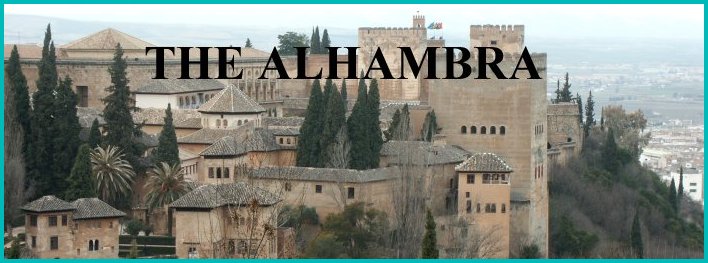
Index to Images of the Alhambra in Granada
151 images
| The Alhambra was both an alcazaba (fortress) and an alcázar (palace) as well as a small city. The name, from Arabic roots, also means red or crimson castle--or red citadel. This wood and plaster complex (fairly impermanent materials--a sign of Moorish humility) has been much restored over the past one hundred years. And it is still being explored and excavated. Begun in 1238, it was the last refuge for Spanish Moslems on the Iberian peninsula. When the Catholic kings took over the complex, they did not destroy it. (See below--Charles V's Palace.) There were three main sections in the complex: public areas for the everyday business of the palace and government; a somewhat more secluded section for state rooms and official entertainments; and finally private areas for the apartments of royalty and the palace household. The index below indicates the areas I was able to photograph. | ||

|
Exterior and Towers10 images | |

|
Mexuar and Court of the Gilded Room16 images | |
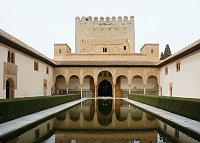
|
The Court of the Myrtles and Hall of the Boat14 images | |
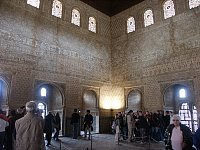
|
Hall of the Ambassadors13 images | |
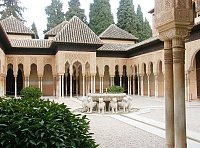
|
The Patio of the Lions17 images | |
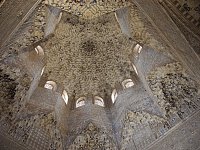
|
Hall of the Abencerrajes and Hall of Kings (or Hall of Justice)13 images | |
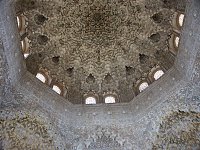
|
Hall of the Two Sisters and Mirador of Lindaraja (or Daraxa) [and geographically related images]14 images | |
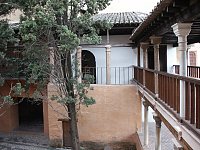 |
Queen's Dressing Room and gardens11 images | |
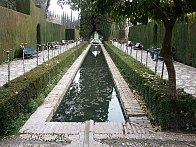 |
Lower Gardens9 images | |
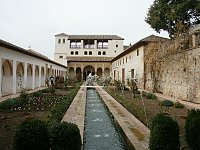 |
Generalife17 images | |
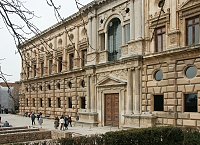 |
Palace of Charles V17 images | |
 Click here to return to index of art historical sites.
Click here to return to index of art historical sites.
 Click here to return to index of artists and architects.
Click here to return to index of artists and architects.
 Click here to return to chronological index.
Click here to return to chronological index.
 Click here to see the home page of Bluffton University.
Click here to see the home page of Bluffton University.

© 2005 Mary Ann Sullivan. I have photographed (on site), scanned, and manipulated all the images on these pages. Please feel free to use them for personal or educational purposes. They are not available for commercial purposes.